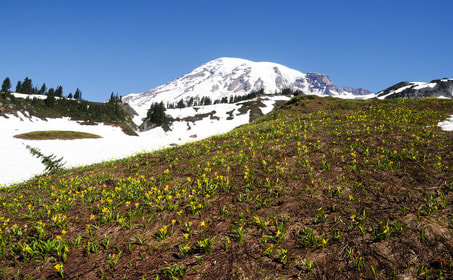Nisga'a, British Columbia

Year(s) Funded: 2010-2011
Topic Area: Knowledge Sharing / Education Contact: Nancy Mackin, Deanna Nyce ([email protected]) Partners: Wilp Wilxo’oskwhl Nisga’a Title: Nisga’a Women’s Health Foods, Shelter and Education in the Mountainous Permafrost
Action: As glaciers melt, the ice patches change into alpine meadow: the kind of meadow where Nisga’a Elders have for centuries found an abundance of berries and other food plants. Cooled and kept moist by glaciers, these meadows and other components of glacier-influenced watersheds are home to diverse plant and animal species and are a critical place for sustaining biodiversity in British Columbia and elsewhere in Canada. Scientists note that as glaciers melt, they are replaced by these food-rich alpine meadows. The melting glaciers in the Nass Valley will initially create larger sites for growing the rich diversity of healthy foods that grow in the moist, glacier-cooled alpine permafrost. In the long term, however, the area of the alpine tundra region in British Columbia is expected to decline dramatically, as much as 90 percent over the next fifty to one-hundred years. Scientists and oral history alike, report that much of the disappearing alpine tundra may be replaced by subalpine shrublands. This project demonstrated that the alpine shrubland/wetland ecosystem is also rich in food resources. Places such as Lax Bilak may be critical to ensuring that a range of healthy foods and materials will remain available even as glacial plains become alpine permafrost and then subalpine shrublands, under the influence of accelerating climate change. This project conducted fieldwork at Lax Bilak, the Nisga’a berry picking grounds in the subalpine. Results: If Lax Bilak and other food-producing sites are to remain healthy and abundant, it is important to listen to the traditional ecological knowledge and wisdom of the people who have looked after these lands for countless generations. Through the research at Wilp Wilxo’oskwhl Nisga’a Institute, women’s knowledge of healthy foods, shelters, and education in the alpine permafrost was actively recorded and communicated across generations. At WWNI, Nisga’a Elders and knowledge-holders are re-introducing women’s wisdom to young Nisga’a people, who in turn are gradually restoring the knowledge to active use. The children’s day camps and ethnobiology field trips of our research have provided additional opportunities for Elders to share their wisdom about the alpine permafrost and its value to survival. Outputs: A video “Healthy Food and Shelter in the Alpine Permafrost: Nisga’a Women Remember” and a booklet “Nisga’a: Women’s Healthy Foods, Shelters, and Education in the Mountainous Permafrost.” Additional Resources & Publications
|
